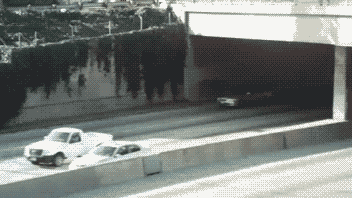RANDOM POSTs
-
Planning to move jobs? These cities are now so expensive they’re considered ‘impossibly unaffordable’
Read more: Planning to move jobs? These cities are now so expensive they’re considered ‘impossibly unaffordable’https://www.cnn.com/2024/06/14/business/house-prices-impossibly-unaffordable-intl-hnk/index.html
Top 10 “impossibly unaffordable” cities
- Hong Kong
- Sydney
- Vancouver
- San Jose
- Los Angeles
- Honolulu
- Melbourne
- San Francisco/Adelaide
- San Diego
- Toronto
-
Google Street View Hyperlapse
Read more: Google Street View HyperlapseAll Google Street View imagery captured using hyperlapse.tllabs.io. Source code available at github.com/TeehanLax/Hyperlapse.js.
Read the full story: teehanlax.com/labs/hyperlapse/
-
Meta Avat3r – Large Animatable Gaussian Reconstruction Model for High-fidelity 3D Head Avatars
Read more: Meta Avat3r – Large Animatable Gaussian Reconstruction Model for High-fidelity 3D Head Avatarshttps://tobias-kirschstein.github.io/avat3r
Avat3r takes 4 input images of a person’s face and generates an animatable 3D head avatar in a single forward pass. The resulting 3D head representation can be animated at interactive rates. The entire creation process of the 3D avatar, from taking 4 smartphone pictures to the final result, can be executed within minutes.
https://www.uploadvr.com/meta-researchers-generate-photorealistic-avatars-from-just-four-selfies
-
An Open Letter To VFX Artists And The Entertainment Industry At Large Visual Effects Society 2.0
Read more: An Open Letter To VFX Artists And The Entertainment Industry At Large Visual Effects Society 2.0http://www.visualeffectssociety.com/node/2425
As an Honorary Society, VES has led the way in promoting the incredible work of VFX artists but so far no one has stood up to lead the way on the business side of our business. No one has been able to speak out for unrepresented artists and facilities – or the craft as a whole – in any meaningful way.
-
Alibaba 3DV-TON – A novel diffusion model for HQ and temporally consistent video
Read more: Alibaba 3DV-TON – A novel diffusion model for HQ and temporally consistent videohttps://arxiv.org/pdf/2504.17414

Video try-on replaces clothing in videos with target garments. Existing methods struggle to generate high-quality and temporally consistent results when handling complex clothing patterns and diverse body poses. We present 3DV-TON, a novel diffusion-based framework for generating high-fidelity and temporally consistent video try-on results. Our approach employs generated animatable textured 3D meshes as explicit frame-level guidance, alleviating the issue of models over-focusing on appearance fidelity at the expanse of motion coherence. This is achieved by enabling direct reference to consistent garment texture movements throughout video sequences. The proposed method features an adaptive pipeline for generating dynamic 3D guidance: (1) selecting a keyframe for initial 2D image try-on, followed by (2) reconstructing and animating a textured 3D mesh synchronized with original video poses. We further introduce a robust rectangular masking strategy that successfully mitigates artifact propagation caused by leaking clothing information during dynamic human and garment movements. To advance video try-on research, we introduce HR-VVT, a high-resolution benchmark dataset containing 130 videos with diverse clothing types and scenarios. Quantitative and qualitative results demonstrate our superior performance over existing methods.
-
OpenAI may go bankrupt by 2024, AI bot costs company $700,000 every day
Read more: OpenAI may go bankrupt by 2024, AI bot costs company $700,000 every dayWhile OpenAI and ChatGPT opened up to a wild start and had a record-breaking number of sign-ups in its initial days, it has steadily seen its user base decline over the last couple of months. According to SimilarWeb, July 2023 saw its user base drop by 12 per cent compared to June – it went from 1.7 billion users to 1.5 billion users. Do note that this data only shows users who visited the ChatGPT website, and does not account for users who are using OpenAI’s APIs
COLLECTIONS
| Featured AI
| Design And Composition
| Explore posts
POPULAR SEARCHES
unreal | pipeline | virtual production | free | learn | photoshop | 360 | macro | google | nvidia | resolution | open source | hdri | real-time | photography basics | nuke
FEATURED POSTS
Social Links
DISCLAIMER – Links and images on this website may be protected by the respective owners’ copyright. All data submitted by users through this site shall be treated as freely available to share.







